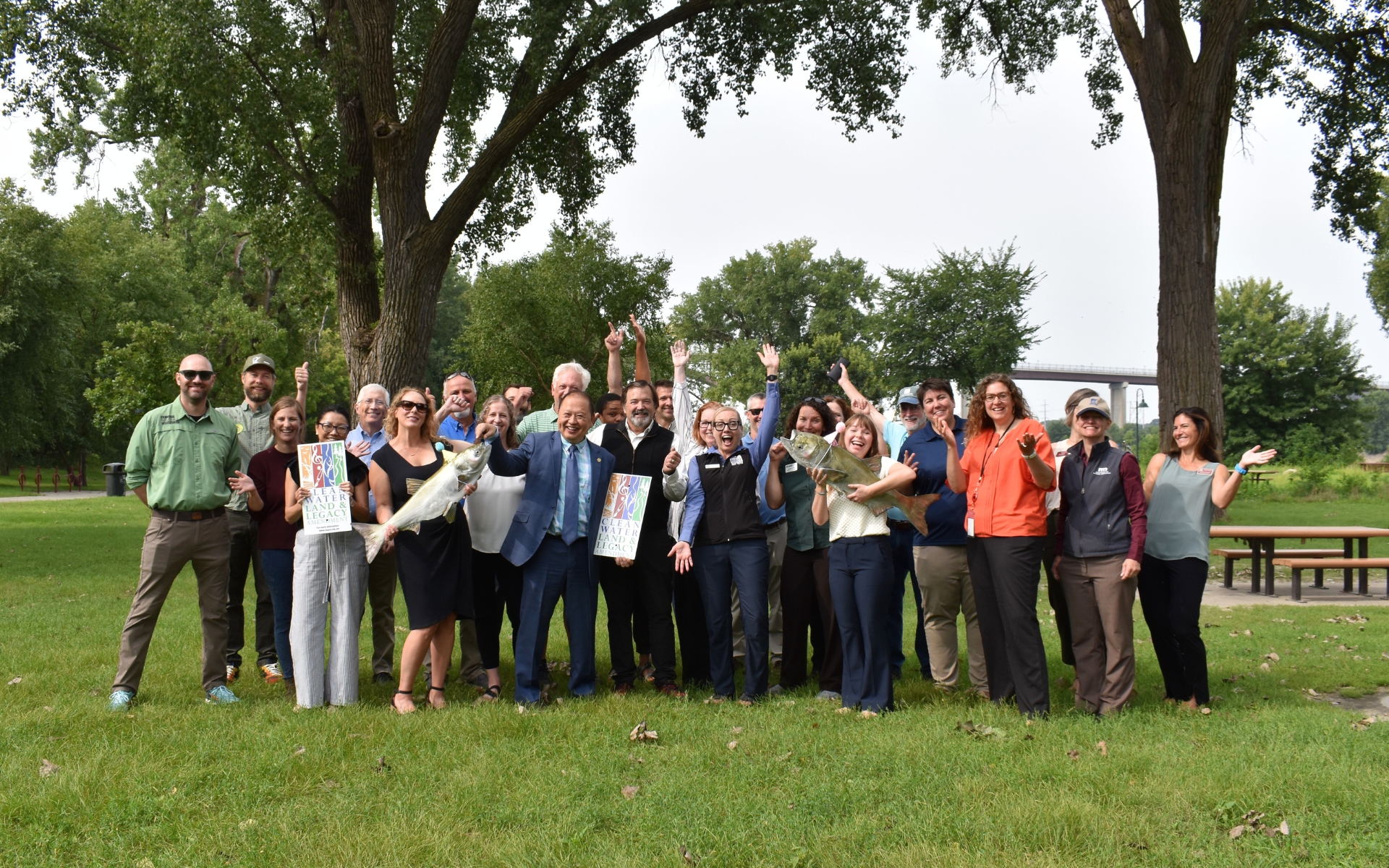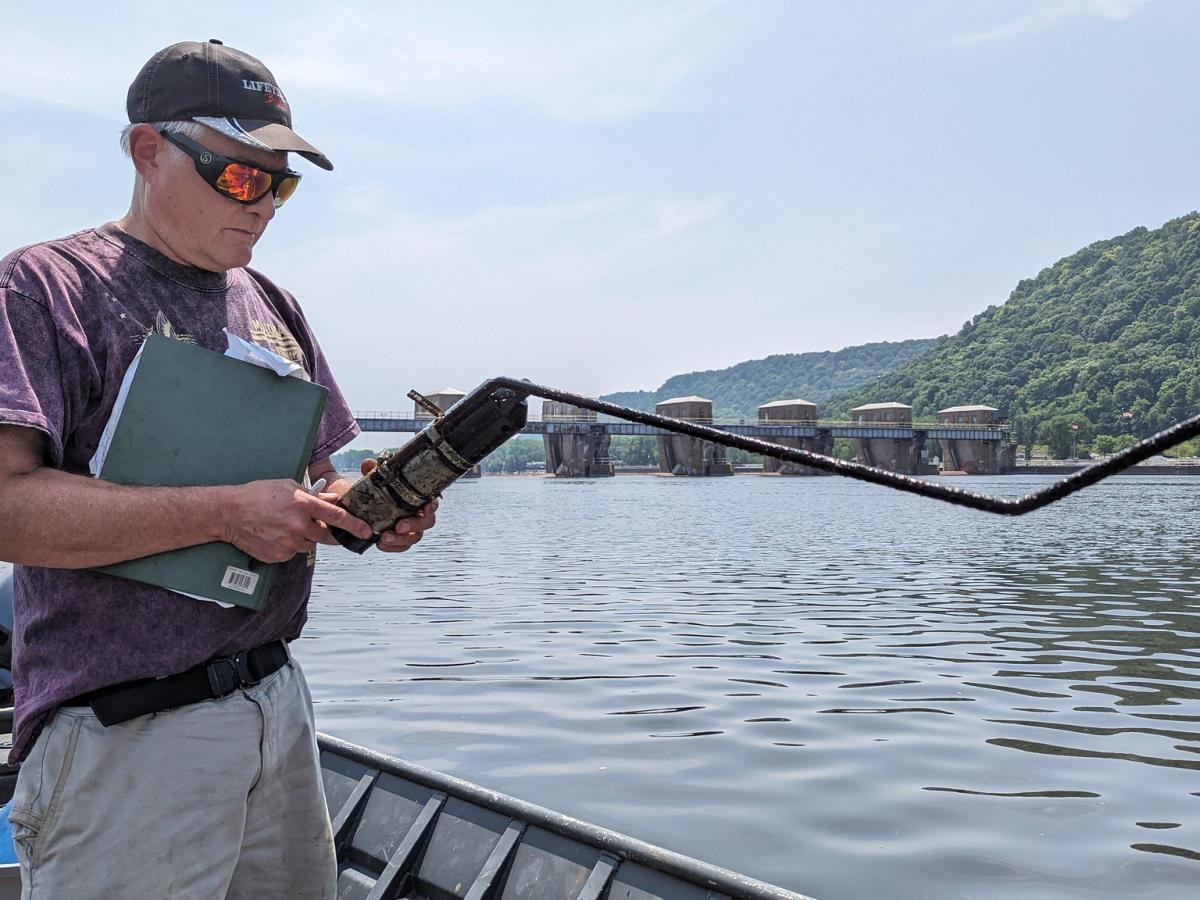Celebrating the carp deterrent win — and starting what comes next

Securing $12 million in funding for an invasive carp deterrent was truly a team effort, with Stop Carp Coalition members, state legislators, agency staff and River Guardians playing key roles. (Photo by FMR)
With news cameras pointed her way and the Mississippi River’s waters flowing in the background, FMR Land Use & Planning Director Colleen O’Connor Toberman stood alongside more than a dozen allies who helped secure funding for an invasive carp deterrent and reflected on the major legislative victory.
"Minnesotans have demanded action against this threat to our boating, our fishing, our rivers — to the waterways that we hold dear and the recreation and tourism upon which our communities depend," she told reporters at the Aug. 20 press conference at Harriet Island. "We owe it to every Minnesotan to see this project through."
That project is a science-supported carp deterrent that can prevent most invasive carp from advancing past it. The $12 million in funding approved by legislators this year will be used to install a deterrent at Lock and Dam 5 near Winona. Combined with ongoing management tactics (such as tracking and removal of the fish), research shows the deterrent is the best shot the state has at preventing invasive carp from becoming established in key watersheds.

What the research says about
how to stop invasive carp
Where and how are invasive carp moving? Why do we need a deterrent? What about native fish? Get a firsthand look at Dr. Peter Sorensen's important research.
Sen. Foung Hawj, an early and persistent champion of the carp deterrent proposal, called the investment "a huge step to protect the waters of the Mississippi River, Lake Pepin and the Minnesota and St. Croix rivers for years to come."
Also at the event was Rep. Leon Lillie, one of the leads in the House.
"Outside advocates really pushed this effort," he said, a nod to the work of the 15-plus organizations who are part of the Stop Carp Coalition, as well as the many individuals (including hundreds of River Guardians) who contacted lawmakers to express their support for carp deterrent funding.
Both KARE 11 and KSTP reported on the celebration. The latter also uploaded the entire press conference to YouTube.
The Minnesota Department of Natural Resources (DNR) will receive the funding in partnership with two federal agencies. At the press conference, DNR Invasive Species Unit Supervisor Kelly Pennington was asked about the long-term cost of managing invasive carp if they become established in the river compared to preventing the species' spread in the first place.
"For invasive species, prevention is always the most cost-effective way of approaching it," Pennington said. "It would be more costly to manage or remove or use those other actions once invasive carp are more abundant."
Christine Goepfert, co-chair of the Stop Carp Coalition and Midwest campaign director with the National Parks Conservation Association, noted she recently toured the river near where the deterrent will be installed and saw invasive carp leaping out of the water.
"Time is of the essence to put this protective measure into place," she said.
The legislation requires the deterrent to be installed by June 30, 2029. The DNR and its partners are currently working on scoping the project, and while Pennington said the agency is "trying to expedite" the process, she noted they "really want to do this right, and spend the time on the scoping phase that we need to."
The money comes via the Lessard-Sams Outdoor Heritage Fund, which is funded through the Legacy Amendment.